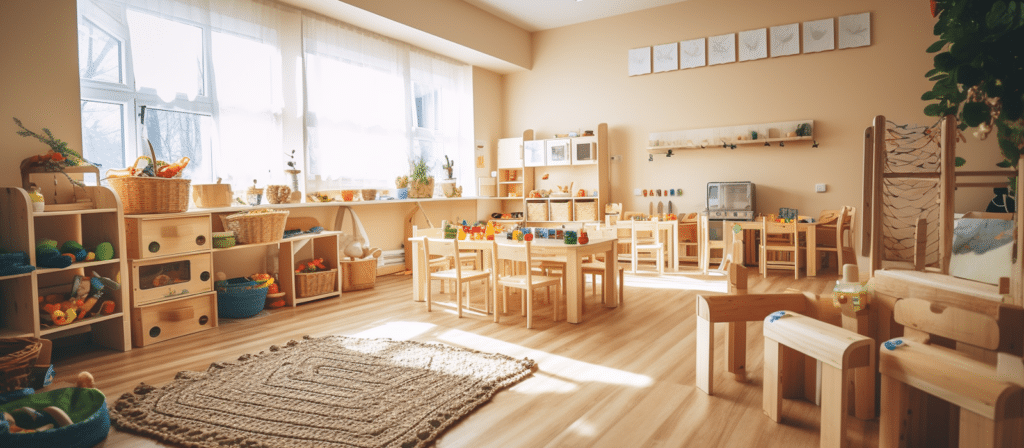Are you searching for innovative ways to foster STEM (Science, Technology, Engineering, and Mathematics) skills and hands-on learning in preschoolers? In today’s rapidly evolving world, equipping young minds with these skills is essential. Join us on a journey to discover how the right preschool furniture can lay the foundation for a lifelong love of learning and problem-solving through STEM and hands-on activities.
Preschool Furniture for STEM and Hands-On Learning is a critical component of creating an enriching and engaging learning environment for young learners. It provides the physical and psychological support necessary to cultivate curiosity, exploration, and discovery. Well-designed preschool furniture encourages hands-on experiences that promote cognitive development, creativity, and a deep understanding of STEM concepts.
What is STEM and Why is it Important for Preschoolers?
STEM stands for Science, Technology, Engineering, and Mathematics, and it is a curriculum that integrates these subjects into a cohesive learning experience. STEM education is essential for preschoolers as it helps develop critical thinking, problem-solving, and analytical skills from an early age. By introducing STEM concepts through hands-on activities, children are encouraged to explore, experiment, and develop a love for learning.

The Role of Furniture in STEM and Hands-On Learning
Preschool furniture plays a significant role in creating an environment that supports STEM and hands-on learning. It should be designed to facilitate exploration, collaboration, and creativity. Here are some key factors to consider when choosing preschool furniture for STEM education:
- Flexibility and Adaptability: Preschool furniture should be modular and adaptable to different activities. It should be easy to rearrange and configure to meet the changing needs of the curriculum. This allows teachers to create different learning stations and encourages children to explore various STEM concepts.
- Ergonomics and Comfort: Comfortable seating and appropriate table heights are essential for young children. Furniture should be designed with ergonomics in mind to promote good posture and support healthy physical development. Comfortable seating also ensures children can focus on the learning activities without distractions.
- Durability and Safety: Preschool furniture must be built to withstand the rigors of daily use by energetic children. It should be made from sturdy materials that are easy to clean and maintain. Additionally, furniture should meet safety standards to ensure the well-being of the children.
- Storage and Organization: An organized learning environment promotes a sense of structure and allows children to easily access and put away materials. Preschool furniture should include ample storage options for keeping STEM tools, manipulatives, and other learning resources neatly organized.
nnovative Preschool Furniture for STEM and Hands-On Learning
Now let’s take a closer look at some innovative preschool furniture options that are designed specifically for STEM and hands-on learning:
- STEM Learning Stations: These are versatile furniture units that can be configured into different shapes and sizes to create various learning stations. They often feature built-in storage, adjustable shelves, and magnetic surfaces for displaying children’s work. STEM learning stations are perfect for engaging children in hands-on experiments and collaborative problem-solving activities.
- Sensory Tables: Sensory tables are designed to stimulate the senses and encourage exploration. They typically have removable bins or tubs that can be filled with water, sand, or other sensory materials. Sensory tables help develop fine motor skills, encourage scientific inquiry, and promote imaginative play.
- Building Blocks and Construction Sets: Building blocks and construction sets provide endless opportunities for creativity and problem-solving. They help develop spatial awareness, fine motor skills, and logical thinking. Look for furniture that includes built-in storage for easy access to blocks and sets.
- STEM Storage Carts: These mobile carts are designed to hold and organize STEM materials, such as building blocks, magnets, and science experiment supplies. They can be easily moved around the classroom, allowing for flexibility in setting up different learning areas. STEM storage carts promote independent exploration and encourage children to take ownership of their learning materials.

Conclusion
Incorporating preschool furniture that supports STEM and hands-on learning is essential for creating an engaging and enriching environment for young children. By providing flexible, ergonomic, and durable furniture, we can empower educators to facilitate hands-on activities that promote critical thinking, problem-solving, and a love for STEM subjects. Let’s invest in creating a learning space that inspires and prepares our youngest learners for a future filled with endless possibilities.













